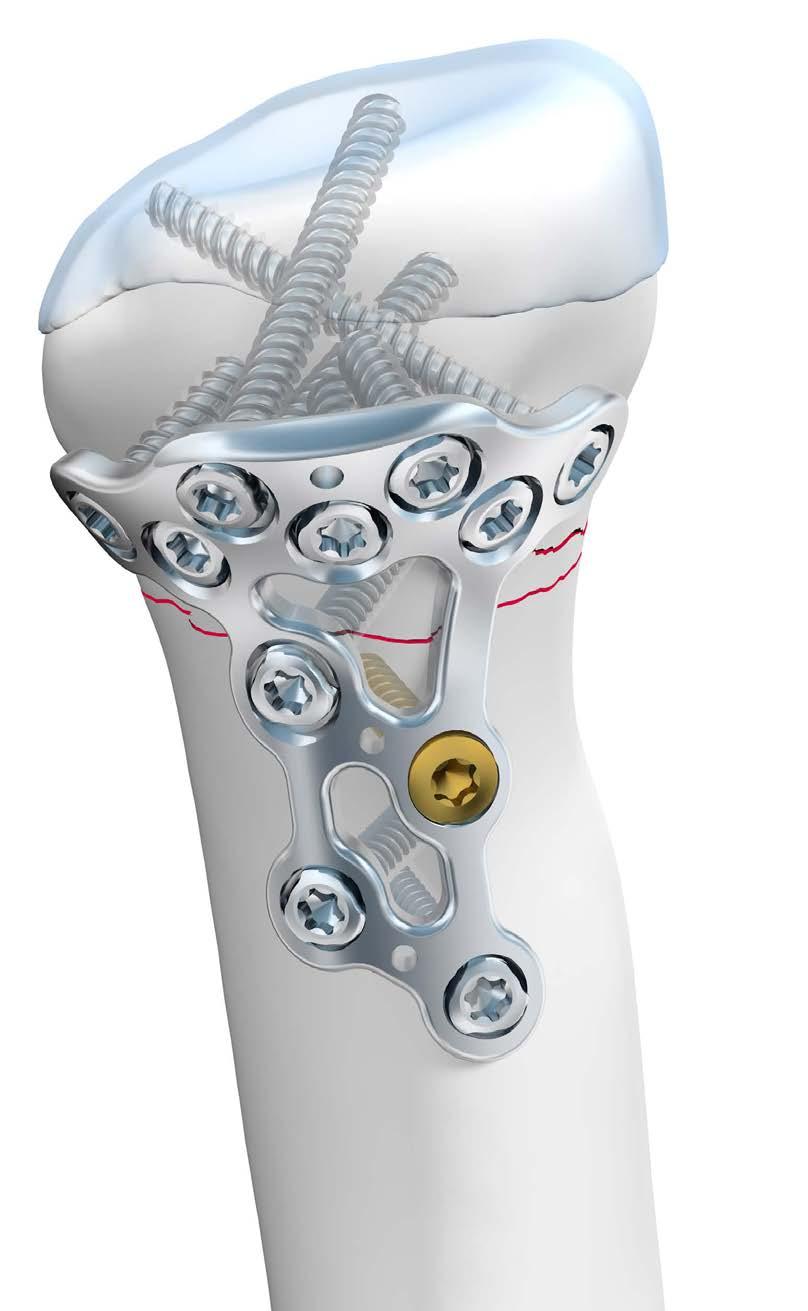
24 minute read
Medartis 360° — Behind the scenes at the headquarters
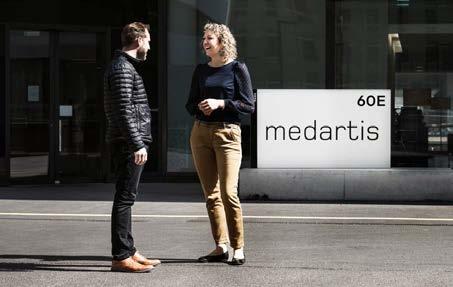
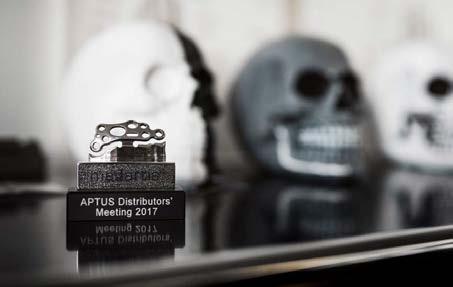
Advertisement
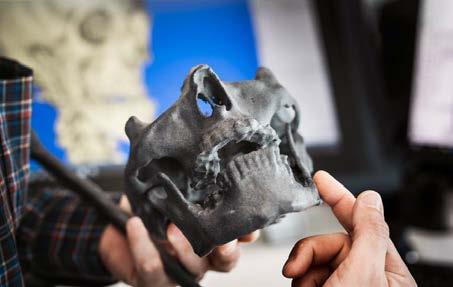
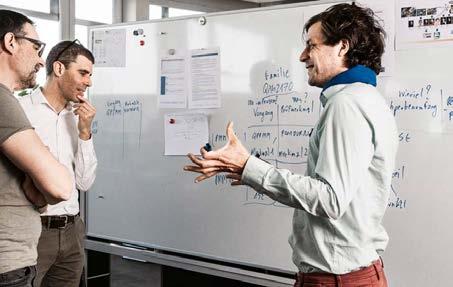
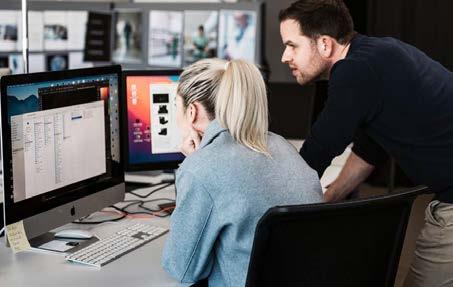
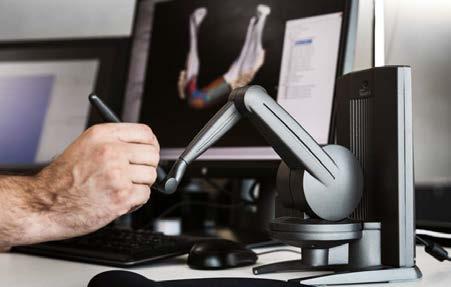
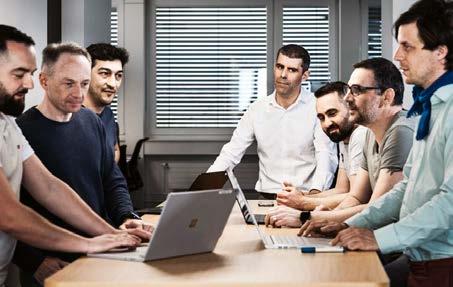


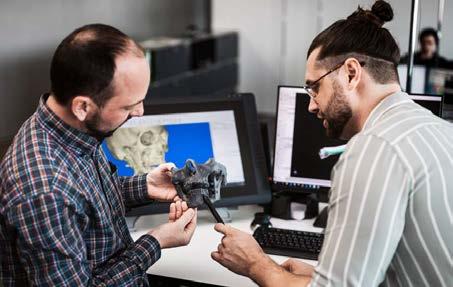
1997 – 2004 Headfirst
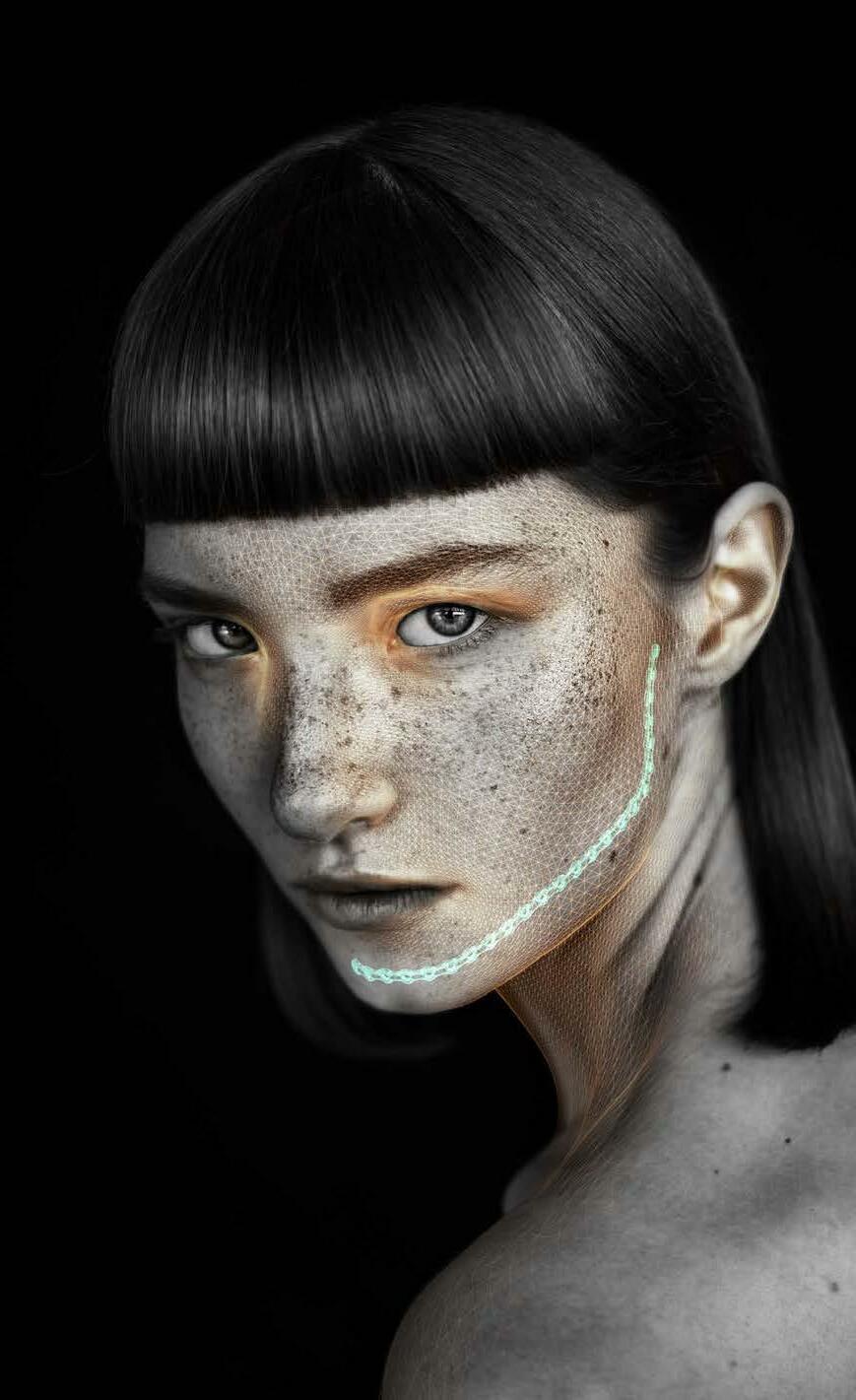

1997 – 2004
Headfirst — With its first product line MODUS, the young company Medartis wanted to gain a foothold in the highly challenging field of oral and maxillofacial surgery. The market was competitive and customers were hard to win over. But thanks to countless hours of teaching in operating theatres, clever ideas and the flexibility of a start-up, Medartis succeeded in establishing itself in the medical technology industry.
In the early summer of 1996, two aspiring young entrepreneurs from the Basel area met at the traditional country inn Bären in Langenbruck, where the Generals Wille and Guisan had stayed. One was 33-year-old Thomas Straumann. The other his mentor, Rudolf Maag, who was 17 years his senior.
The reason for the meeting: Straumann wanted to move into the field of osteosynthesis with his company, Straumann Holding AG, which specialised in dental implants. This was a delicate undertaking, because he had sold this very business area that he and his three sisters had owned to Rudolf Maag back in 1990. At the time, Straumann had agreed with Maag that they would not compete with each other in the future – a clause that Straumann would violate by re-entering the field of osteosynthesis. So he wanted to talk to Rudolf Maag, with whom he had been closely associated for years; on the one hand, because Maag had already worked under Fritz Straumann at the old Straumann Institute, and, on the other hand, because Maag was the uncle of Thomas Straumann’s wife.
Maag was not concerned. After all, Straumann was targeting a segment of the market that was not a core business of Maag’s Stratec Medical: oral, jaw and facial surgery, known in specialist circles as cranio-maxillo-facial surgery (CMF). For Straumann Holding AG, this niche was closely related to the dental implants, so the entrepreneurial step was obvious, even Maag thought so. But he couldn’t resist taking a dig: “You’re going to need some luck,” he said, because he knew that a cut-throat battle was raging within the osteosynthesis industry, with major international companies such as Synthes, Stryker and Zimmer Biomet competing against each other. In addition, surgeons, the most important customer group in the industry, were considered conservative and reluctant to change the implant systems to which they had become accustomed. Many a newcomer on the business scene has had to find this out the hard way. Straumann could be next.
Focus on the perfectionists
The re-entry of Thomas Straumann’s holding company into the field of osteosynthesis was therefore a highrisk venture. Others knew this too: He couldn’t get a penny’s worth of credit from the Basel Kantonalbank in Liestal. Moreover, Straumann Holding was planning an IPO, so investors and market analysts strongly advised against getting bogged down with an investment-intensive entry into a new field of business.
However, Thomas Straumann had every reason to trust his instinct for detecting lucrative niches in the market. After all, in the last six years he had established a successful company from a small spin-off of the old Straumann Institute that would soon be valued at over a billion Swiss francs on the stock market. Nevertheless, Straumann knew one thing for sure: he couldn’t do this alone. He needed strong partners – and the very first thing he did was to get his best friend Willi Miesch on board. O At the beginning of November 1997, Thomas Straumann, Willi Miesch and Jürg Eichenberger, the investor, founded Medartis AG. Straumann became Chairman of the Board of Directors, Miesch the Managing Director, and Dominik Ellenrieder soon joined the company as an extremely well-connected board member and investor.
CMF surgery was not the largest business sector – that title went to the orthopaedic market with implants for the spine, knee and hip. But the niche was ideal for making a name for oneself. “CMF has always been the highest and most challenging of disciplines in surgery,” says Willi Miesch even today. Nowhere are the bones as delicate as in the face, nowhere are the results of surgical craftsmanship so obvious. Whoever practices here must be a perfectionist. And those who are able to supply and satisfy these perfectionists with products will later have a good chance of succeeding in other surgical fields as well.
Expanding the portfolio
MODUS is the name of the first product line that Medartis planned to launch on the market. It goes back to a development by the Swedish med-tech group Elekta, from which Thomas Straumann had bought MODUS, including rights and patents, for 7.5 million Swiss francs. In addition to Willi Miesch, five German mechanical engineers and precision mechanics from Elekta in Umkirch near Freiburg were taken onboard to be responsible for developing MODUS further – including MODUS inventor Joachim Pfefferle, Hermann Zeuner and Peter Scheuble. Some of them already had several years of experience in the construction of titanium plates and screws for oral and maxillofacial surgery. After Elekta had invested too little in the development of MODUS, the mood was now one of optimism. “We suddenly had our hands full,” recalls Hermann Zeuner.
MODUS, a modular, colour-coded complete system for implants in the CMF industry, was available at this time in four versions: red sets (screw diameter 0.9mm-1.2mm) with the world’s smallest titanium screw for the skull and face, green sets (1.5mm1.8mm) for the midface, blue sets (2.0mm-2.3mm) for the jaw, and yellow mesh sets, into which all screws from 0.9mm to 2.3mm can be fixed. The precision-mechanical production was to be carried out initially by subcontractors mostly in Switzerland.
In the course of the first few years, the systems MODE OSS 2.0, Trauma 2.0 with semi-rigid plates, Trauma 2.5 and Reco 2.5 were added. With the mandibular reconstruction plate Reco 2.5, the start-up developed a technology for the first time in which the screws could be locked in the screw head for the greatest possible stability. It could also hold the damaged bone parts together by means of interfragmentary compression. The design of the plate bars (bionics), copied from nature, reduces the risk of fractures when under stress, and the plate is curved instead of straight. This means that the surgeon has to bend the implant only slightly in the operating theatre, and Medartis also offered suitable bending and cutting forceps for this technique.
Medartis became a pioneer with the Reco plate in the then newly developed locking technology and thus became a noticeable player in the market.
At the forefront
The birthplace of these inventions was Umkirch, where Medartis AG had set up its development department and prototype workshop at the old Elekta site. Joachim Pfefferle managed the business in Umkirch, while the headquarters were set up at 22 Steinengraben in Basel. However, Willi Miesch, the Managing Director, was hardly ever there. On the 70-kilometre stretch of the A5 between Basel and Umkirch the passionate mechanic soon got to know every crash barrier, that’s how often he was visiting the prototype workshop. Even more frequent were his trips across Switzerland and the neighbouring countries, through which he drove his LandRover tirelessly to present MODUS to leading oral surgeons. The potential clientele was international right from the start, because there were very few oral surgery researchers in Switzerland. University hospitals in Germany, Austria and France were thus becoming more relevant customers.
In the early years Medartis relied on its “big sister”, Straumann Holding AG, for distribution. Thus, Medartis’s first customers were usually already Straumann customers – for example, the maxillofacial surgery department of the Münster University Hospital headed by Prof. Dr. Dr. h.c. Ulrich Joos. He was Medartis’s ideal partner, as he was a distinguished expert in the treatment of cleft lip, jaw and palate, craniofacial malformations (skull and face) and dysgnathic surgery (malocclusion). He was “the most innovative oral surgeon of his time”, Willi Miesch recalls.
Professor Joos was an advocate of the French school of oral surgery and
according to this philosophy, osteosynthesis is not just about rigidly screwing two bones together but rather the selfhealing power of the body should be considered. This philosophy was entirely in line with Medartis’s approach of using semi-rigid implants to give the bone and tissue room to heal.
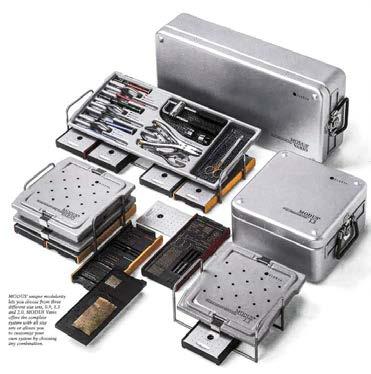
But their agreement extended beyond medical theory. They also harmonised in practice. And that was mainly due to the hands-on approach that was cultivated at Medartis. Willi Miesch and Joachim Pfefferle spent hours with the operating theatre staff and the surgeons in various operating theatres to gain a better understanding of the needs of the customers who were on the front line. Later on, in Umkirch, Pfefferle would then sketch new implants according to the physician’s specifications, which the team turned into a prototype within weeks and then sent to the clinics for evaluation.
The approachable nature of the staff, the high quality and precision of the implants, the intuitive handling of the colour-coded MODUS systems – were some of the many reasons for Medartis’s rapid success. The first hurdle had been overcome, the entry into the market was successful.
Everyone under one roof
The year 2001 began with a move involving the employees of Medartis. A former printing shop at 24 Austrasse, in the heart of Basel, offered enough space for everyone on three floors: the management, the administration, the development department with the prototype workshop; and even a training room was set up. Strictly speaking, it had too much space. “How are we ever going to fill this huge building?” asked engineer Zeuner as he took his seat at his new desk for the first time in the spacious, sparsely furnished development department and looked around. He pushed the table against the wall, but now the room seemed even bigger to him. So it went back to the centre. Some new employees would come in handy. He didn’t have to wait long.
Concentrating on one location had logistical advantages. But above all, it accelerated an important success factor: the development of a corporate culture and a team spirit. Boss Miesch used to cheer with the team when a big order rolled in. He would help with the packing of boxes when a delivery had to go out particularly quickly. And then there were the many rounds of drinks after work. Or, if the work took longer, the Klingental restaurant conveniently
served dinner even at 11 pm. And not just any dinner at that, but Cordon Bleu with French Fries!
Own distribution and subsidiaries
As promising as all this was, there were also problems. One problem was the distribution, which was still handled by Straumann Holding AG and did not work out as Medartis would have liked. The reason was that Straumann’s sales representatives could sell their established dental implants easier than the plates and screws of the still largely unknown start-up Medartis. In addition, Medartis and Straumann were dealing with a similar group of customers, but not the same ones. “A dentist is not an oral surgeon,” said Willi Miesch, describing the dilemma.
In 2002, Medartis decided to build up its own sales organisation and to find subsidiaries abroad for this purpose. Medartis reactivated its GmbH in Umkirch, Germany, as a sales company, followed by branches in Vienna and Lyon, in Batley, England, and in Philadelphia. From here, the new employees set out to inspire clinics and surgeons with enthusiasm for Medartis and MODUS.
Thanks to the company’s own sales organisation, new customers could be serviced far more efficiently than having to divert via Straumann Holding AG’s sales department. For surgeons, this meant that they could count on fast deliveries of plates and screws, and not only if Willi Miesch or Joachim Pfefferle attended to them personally.
Now the training room in the basement on Austrasse became really useful. Here, under the supervision of Prof. Dr. Wilfried Schilli, the oral surgeon from Freiburg – who, by the way, was also a fan of the Cordon Bleus in the Klingental – the field teams practised the handling of plates, screws and plastic bones. They acquired the necessary know-how and were thus well equipped to talk to the surgeons on their level.
Dedicated to science
Professor Schilli’s example shows that Medartis and science have a symbiotic relationship, for which Thomas Straumann, Chairman of the Board of Directors, could also be thanked. His father, Fritz Straumann, had made it his business to enable industry and science to benefit from each other, and in 1980 he co-founded the International Team for Implantology (ITI), which has since promoted research and scientific exchange in dental implantology. Founding member and second president of the ITI: Prof. Dr Wilfried Schilli. Following the same tradition, Thomas Straumann was present on 25 September 2004 when the International Bone Research Association (IBRA) was founded in Zurich – an association of surgeons whose exchanges contribute to the advancement of osteosynthesis as a research field. It was important to him that Medartis established itself as a science-based company, even if others saw it as an unnecessary cost factor. Straumann’s intuition was dead right once again: IBRA became one of Medartis’s most important development partners.
At this point, the board of directors had been discussing how the start-up could expand its portfolio. The next largest implants after the fine MODUS products were used in hand and wrist surgery. Medartis made its move as this opened up new dimensions in marketing. Almost every hospital with a surgical department has a hand surgery unit. Distal radius fractures, i.e. the bone fractures of the radius near the wrist, is one of the most common fractures.
Hermann Zeuner had to move his desk back against the wall to make room for the new employees. The offices on Austrasse were filling up quickly – the number of employees had more than doubled since he first moved in, and soon the offices and workshop would be bursting at the seams. Zeuner and his colleagues Pfefferle, Scheuble, Walter and Thiel were themselves contributing to this. They were tinkering with an invention that would finally help Medartis achieve its breakthrough.
1996
Thomas Straumann bought the Swedish med-tech group Elekta’s modular, colour-coded complete system for osteosynthesis in the field of maxillofacial surgery.
1997
Dr Jürg Greuter has been with Medartis from the beginning – as a member and secretary of the Board of Directors. Throughout the years, the lawyer has provided legal advice to the company.
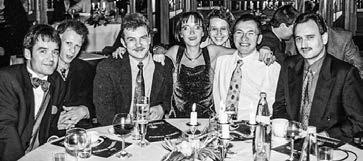
1998
The first Medartis team at a Christmas party in Freiburg, photographed by Willi Miesch (from left to right): Hermann Zeuner, Tilmann Hartlieb, Michael Roth, Christine Schwaderer, Christine Hasler, Peter Scheuble, Joachim Pfefferle.
2001
In a former printing shop at 24 Austrasse, in the heart of Basel, all Medartis employees come together for the first time under one roof.
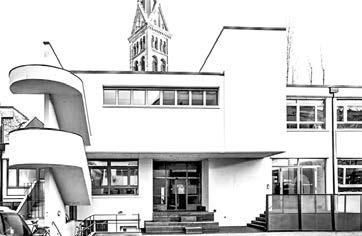
Medartis presents its MODUS product range at an MKG congress in Münster. And proves that it has good taste in art. It is not without reason that “Medartis” is a neologism made up of “medicine” and “art”.
Thomas Straumann, Chairman of the Board of Directors, is also constantly on the move. He commutes between his home in Gstaad and his companies, Straumann Holding AG in Waldenburg and Medartis AG in Basel. He is also passionately committed to enabling cooperation between science and industry, especially as a member of the International Team for Implantology (ITI) and the International Bone Research Association (IBRA), which he co-founded in 2004. In 2004, the Faculty of Medicine of the University of Basel awarded him an honorary doctorate. Ti22 – titanium is the be all and end all of medical technology. Nothing works without it. The naturally occurring metal is light, extremely strong and corrosion-resistant. Moreover, hardly anyone is allergic to it. Medartis uses titanium alloys of varying degrees of hardness for its screws and plates – the purer it is, the softer the metal.
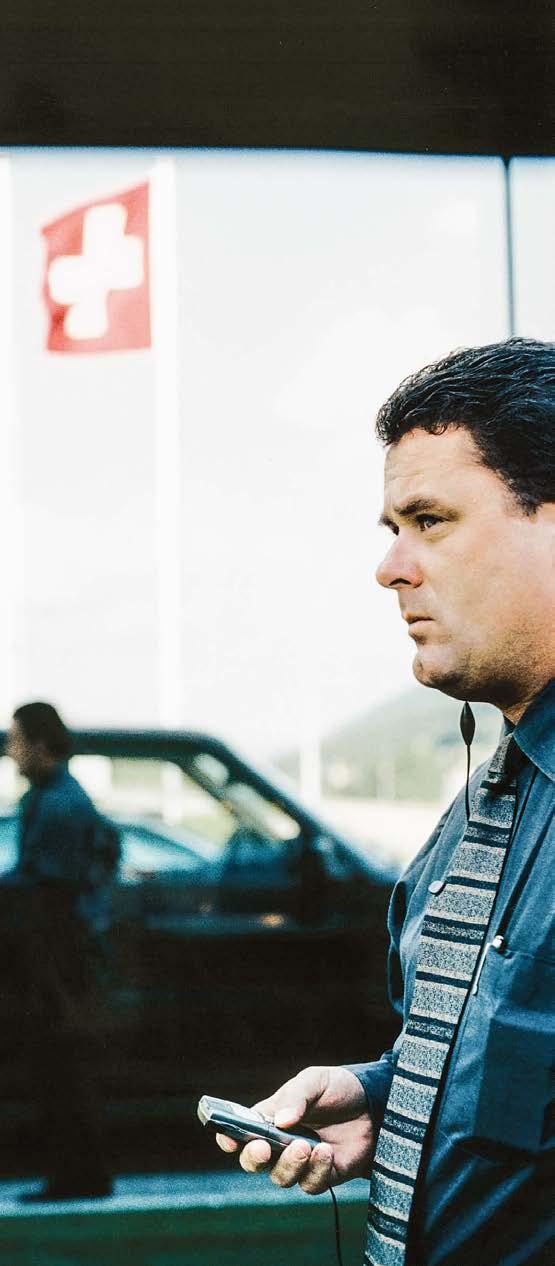

During the legendary summer excursions, Willi Miesch (right) would also challenge his team in sporting activities – whether on a bicycle, a scooter or in a canoe on the Rhine.


Always on par (from left to right): Willi Miesch, Prof. Dr. Dr. h.c. Ulrich Joos (Münster), Prof. Dr. Edward Ellis (San Antonio, Texas) and Prof. Dr. Joël Ferri (Lille) at a forum on orthognathic surgery in Gstaad. The renowned surgeon Prof. Dr. Astrid Wilk from Strasbourg was one of Medartis’s first customers in the field of oral surgery. Appreciating the quality of Medartis products, Dr. Wilk dedicated her experience and professional know-how to the service of the company in order to drive the development of the MODUS range.
The CMF products by Medartis change lives – such as that of 13-year-old Dascha from Gomel in Belarus. Dascha is a victim of the Chernobyl nuclear disaster. Her lower jaw was so deformed at birth that she could hardly breathe. She underwent several operations at the University Hospital in Basel. Mechanical distractors were used, which Medartis provided free of charge.
1998 Start it up!
Christine Hasler
I was the first employee at Medartis. Before me, there was only one other employee, and that was the Managing Director Willi Miesch. After having worked for several years in marketing and sales for international pharmaceutical companies, I applied for a job at the end of 1997 as an assistant to the management of a start-up company. I had never heard of the company name Medartis. At the first job interview Willi Miesch pointed out to me bluntly: “With us you’re not just going to have things handed over to you.” But that was actually already clear to me, since Medartis didn’t even have an office at that time. It was obvious that I was at the beginning of history in the making here. So I replied, “That’s exactly why I’m here: I want to help build up something!”
On my first day of work on 1 March 1998, we had an office on Steinentorstrasse, and it was huge! There were hardly any employees and not much else either. So one of my first tasks was to organise coffee sets and paper for the printer. At the same time, we started marketing the MODUS product line – supported by the Straumann company. Every working day was different. I kept Willi Miesch’s over-filled diary, took the minutes at meetings and then, of course, as a cutting-edge startup, Medartis needed its own website, which was still a big deal back then. So one morning a “web designer” came to us in the posh Steinentorstrasse; our neighbours were asset managers and banks. I could hear in the receptionist’s voice that something was not quite right. “There is a mister … ahm …. I don’t quite know….”. So I went downstairs and couldn’t believe my eyes. There was this guy with huge dreadlocks, down to his hips, wearing a yellow linen shirt and pink over-baggy trousers! Oops, I thought, what will my boss think? But he couldn’t care less. “If his results are good, that’s all that counts”. The web designer got the job and our first website turned out really cool.
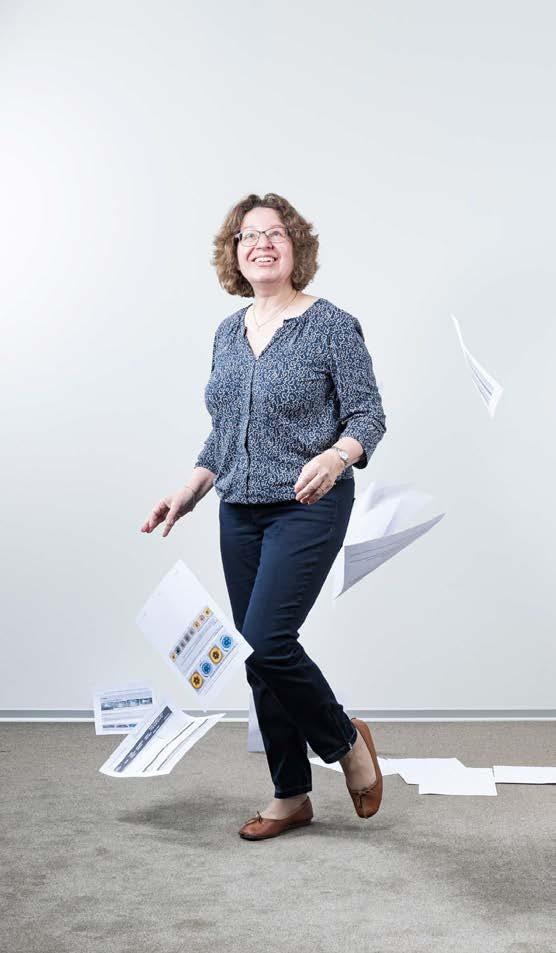
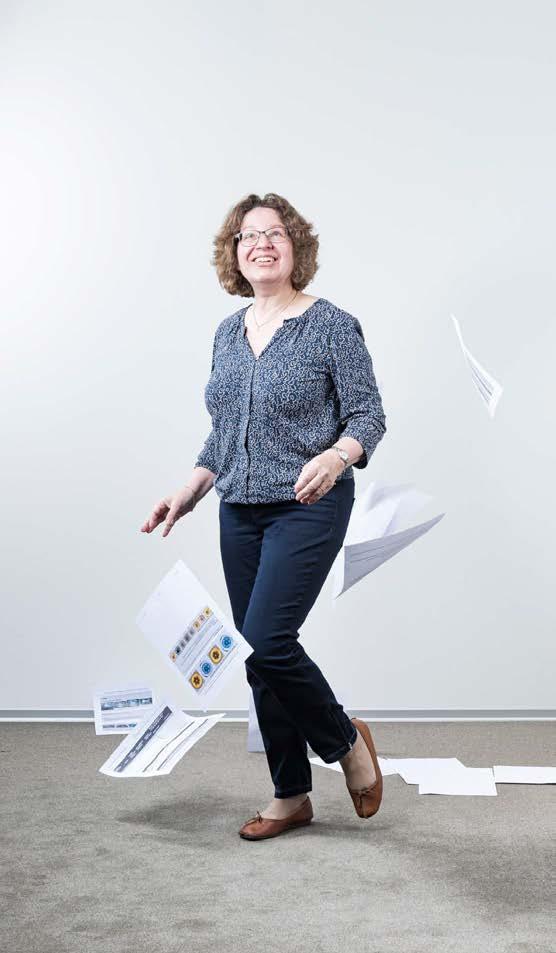
Christine Hasler (58) is Market Support & Documentation Manager at Medartis and she was the company’s first employee. As a child, Christine wanted to become a flight attendant. Those career plans had failed by a very slight margin – fortunately for Medartis.
Watch video
Thomas Alge
When I was a boy, I used to go out into the garden and stare up into the sky. We lived in Lustenau, Austria, not far from the runway of the small Hohenems airfield. I so wanted to become a pilot, but we didn’t have the money for that. After business school I worked as a customs officer and later for a large tax consultancy in Salzburg. That’s when I discovered my talent in distribution and sales.
In 1988, I joined a company that traded in medical products and worked my way up to distribution coordinator – until the summer of 2000, when an old friend asked me if I wanted to join a Swiss company called Medartis. I liked the product, MODUS, and the people behind it. Moreover, I could build up something new here, because Austria had been uncharted territory for Medartis until then. On 1 January 2001, I started my career at Medartis, or rather at Straumann initially, because at that time the distribution was still run by Straumann. However, the “Straumanns” neglected MODUS a bit because it was easier for them to sell the trendy dental root implants by Straumann than the complex CMF products by an unknown company. That was exactly the reason why I had to now concentrate fully on MODUS. And lo and behold: at last something was brewing in Austria. Then came the shock. I was on my way to a Linz hospital with Joachim Pfefferle, the brilliant head of development, to present MODUS to them. Joachim’s mobile phone rang. He picked up and became paler and paler by the minute. After the short call, I asked, “What's going on?” He explained that Straumann would stop distributing Medartis in Austria at the end of 2001 – five months from now. I was irritated, because I had given up a secure and well-paid job for Medartis. And now it was going to be over after just 6 months? I called Willi Miesch. “You can’t do that!” I shouted. He reassured me that I would simply be connected to the Medartis distribution department in Germany. “No way!”, I said. “I’m not having foreign slave-masters over me!” “Ok, so what do you want then?” asked Willi. After a pause he said, “No way, you are not thinking about setting up your own subsidiary, are you?” – “Yes!” I replied, “that’s exactly what I want!”
Three weeks later I met Willi in a conference room of a hotel on Lake Constance. The place had a view of the water and served great food. My twelve-page flip-chart presentation of sales forecasts, cost estimates and growth strategies obviously impressed Willi. Four months later, on 1 January 2002, we founded the first independent international distribution company, Medartis GmbH Austria. I was the managing director, and the only employee as a sales representative.
At the age of 50 I also became a pilot but only as a hobby.

Thomas Alge (61) is not an art dealer, even though Medartis used to advertise its MODUS products using the works of famous artists – as a sign of the artistry (Latin: Ars, artis) of Medartis products. Today, Thomas Alge is Managing Director of Medartis Austria and Switzerland. The father of five children, he still lives with his wife in the house in Lustenau that they had built together at the age of 22 from his first earnings.
Watch video
2004
TriLock
The history of product development at a glance: From the prototype made of plasticine to the three-part solution, the curved radius which almost corresponds to a Fibonacci curve; then to star screws with large overall height, to the TriLock screw in the curved plate that has minimal screw head protrusion.

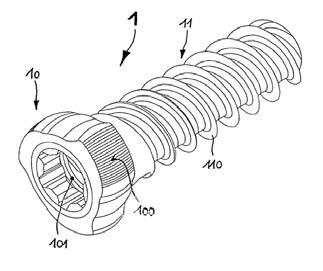
“TriLock has made Medartis what it is today: What was needed was not only creative minds, but also bosses who believed in the visionary technology,” says Matthias Walter, “The Face of TriLock”. He is the engineer and precision mechanic who co-developed the angular-stable, poly-axial, two-part locking technology – and set out to show it to the world. As the International Education Manager, he continues to do so to this day. “There is nothing more important in my professional life than TriLock,” says Walter. A quick glance at the watch. The call from Bad Neustadt is a long time coming. A hasty sip of tea and another glance at the watch. The operation should be over by now. A quick chat with a colleague, then a third glance at the watch. Was all the effort in vain? Staring at the phone, willing it to ring.
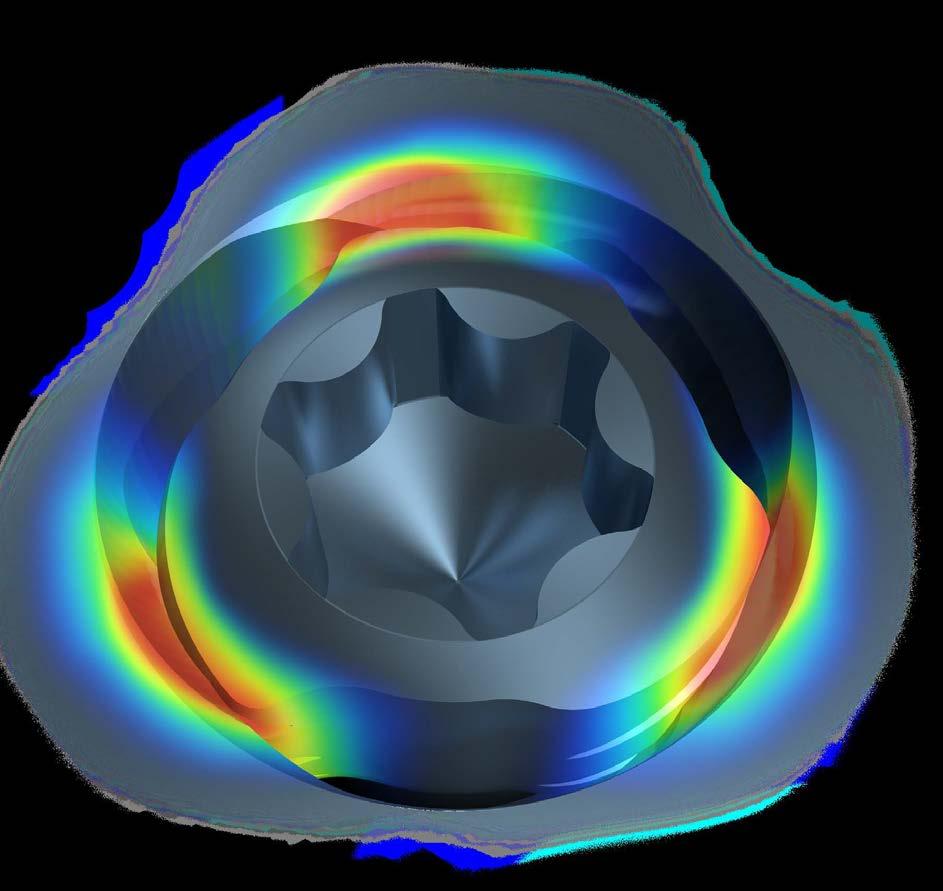
Hermann Zeuner, the Development engineer, feels uneasy. He suspects something foul. In January 2002, one and a half years earlier,
On the right track
Medartis was making inroads into the field of hand and wrist surgery – causing a small sensation: a locking technology that combined flexibility and stability when screwing in the implants.
after Medartis had made a name for itself in oral and maxillofacial surgery, the board of directors wanted to take the next step: a foray into hand and wrist surgery. He allowed the development engineers, led by Joachim Pfefferle, carte blanche to not only design suitable screws and plates, but also give them a chance to tackle technological challenges that had not been addressed thus far – such as the question of optimally locking the screws.
Illustration of a bone screw with the TriLock head, according to the European patent specification.
In the case of multi-part fractures, which often occur in the wrist, it is particularly important that the implant is able to bridge the fracture and redirect the stress around and over the fractured area. This relieves the area of the fracture, and the bone is able to grow together. However, this construct is only stable if the screw is firmly anchored to the plate, i.e., if the angle is stable. If the screw can be aligned from all directions in the screw hole before locking it and is thus placed optimally in the bone, then the system is also multidirectional. The problem is that so far no one has succeeded in combining the two apparent opposites – flexibility in alignment and angular stable locking – in a system made of a rigid material.
Hermann Zeuner and Matthias Walter took up the challenge, joined a little later by Dirk Thiel. They sketched, calculated, discarded – until one day Hermann Zeuner paged through a catalogue in which various fasteners were presented. In it he discovered a quick-release fastener the likes of which he had never seen before. To fix it, the two parts of the fastener were rotated against each other and fixed.
“Friction lock” would also be a conceivable solution for Medartis. The screw was supposed to wedge itself into the screw hole – but how could this cylindrical principle be transferred to a spherical shape? With a Swiss army knife and his daughter’s IKEA modelling clay, Hermann Zeuner formed the very first “prototypes” of a potential screw head. After a long and nerve-racking trial and error process, the friction-lock solution was perfected. Three wedges protruding from the side of the screw head provide friction in the plate hole with its corresponding counter contour. It took dozens of hours to calculate the radius of the wedges, to create the optimum friction that was not too much and not too little. The screw could be swivelled 15 degrees in all directions in the plate hole, and the angle could be corrected and locked again up to three times – in theory – because it took another few weeks before the first screw was put to use. Producing the idiosyncratic TriLock shape in a precise fashion on the turning and fitting machine meant that Peter Scheuble, the head of prototype construction, had to work several night shifts. He turned the developers’ crazy ideas into something tangible.
It’s the 20th of May 2003. The phone is ringing. Finally! Hermann Zeuner grabs it immediately. It’s Matthias Walter on the line, who is calling from the Rhön Clinic in Bad Neustadt, still in his surgical gown. Only half an hour ago he was in the operating theatre, watching, with beads of sweat on his forehead, as Prof. Dr. Hermann Krimmer applied the patented and approved TriLock technology to a patient for the first time. “It worked like a bomb!,” he says. Hermann Zeuner hurries through the corridors and announces the good news to the project team – because TriLock was everyone’s achievement! After the technology had proven to be successful in other clinics too, Medartis was ready to launch TriLock in the autumn of 2004 in the new APTUS product line for hand and distal radius products. The technology strengthened Medartis’s reputation as a leader in innovation and helped the startup achieve the final breakthrough in osteosynthesis.
2005 – 2017 Into the extremes
